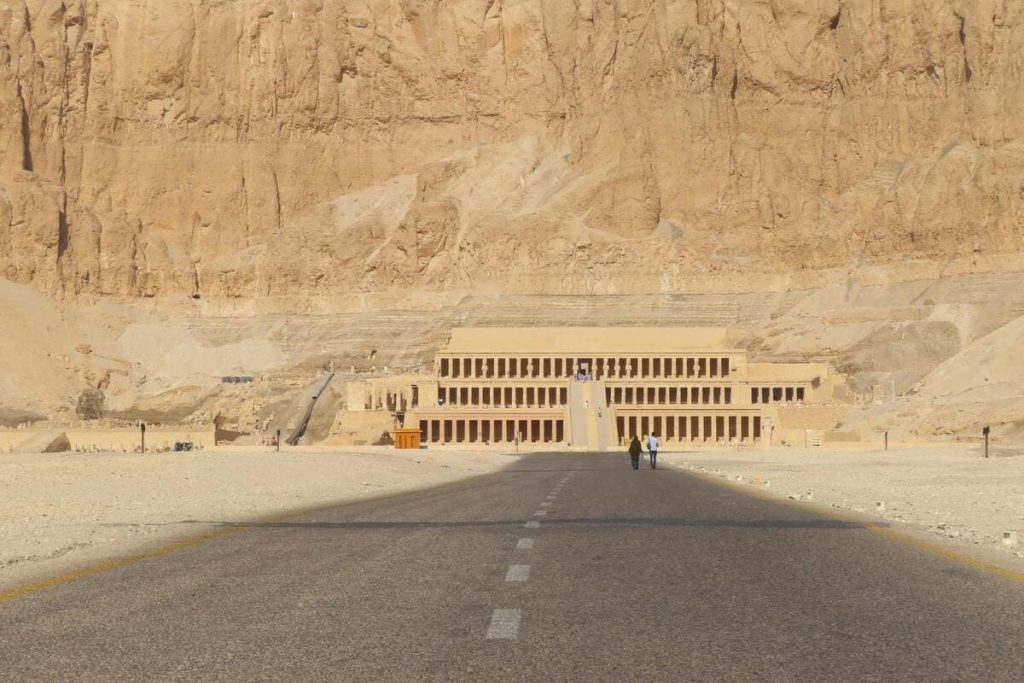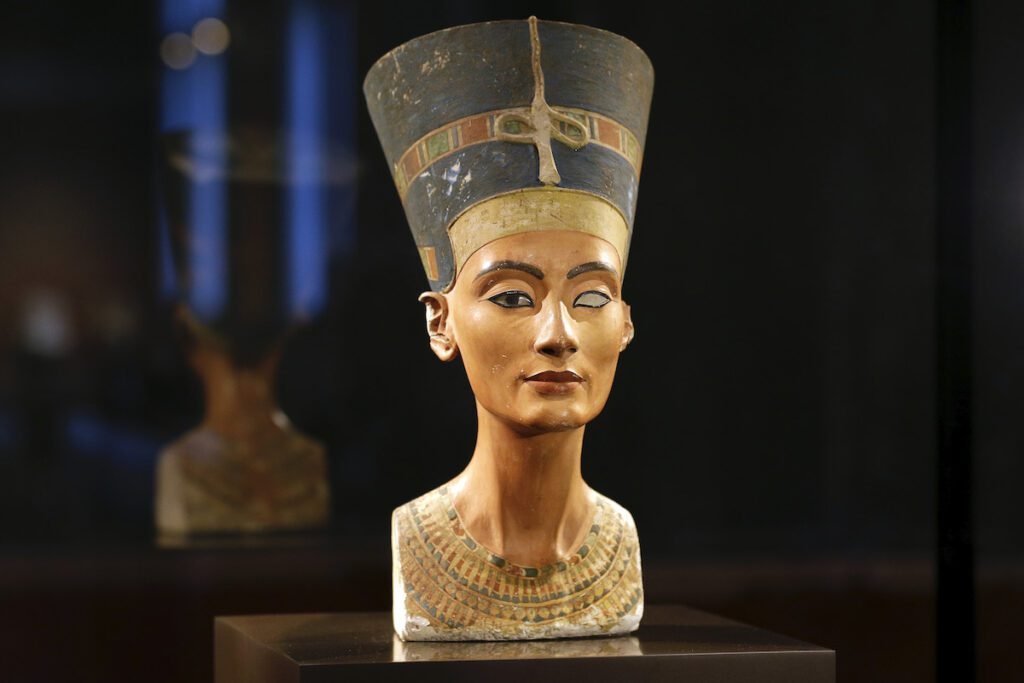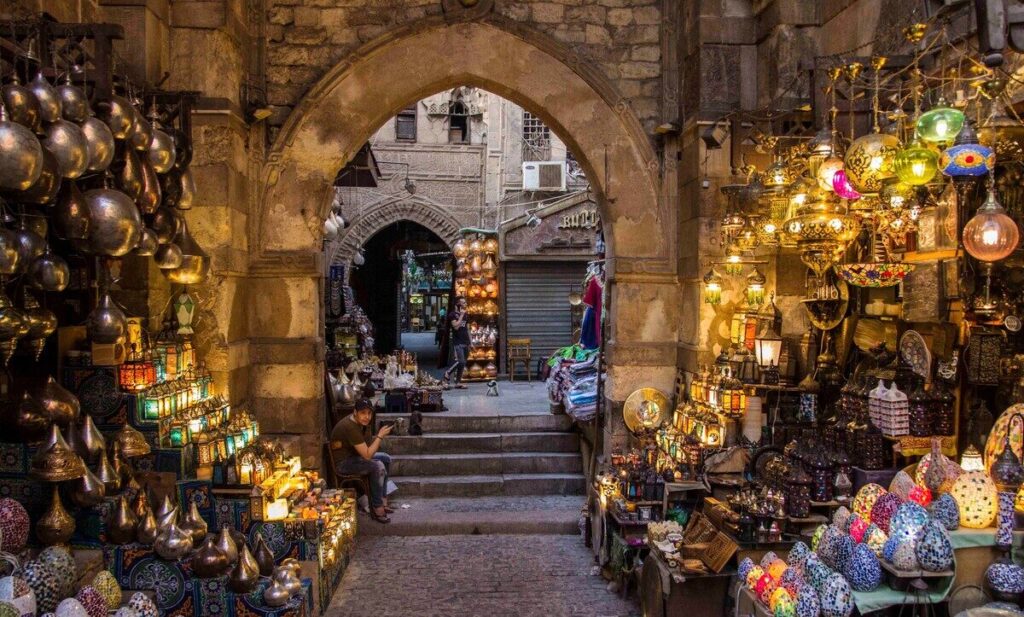Introduction: The Forgotten Powerhouses of the Nile
Beneath the shadow of towering obelisks and amidst the echoing chants of ancient rituals, Egypt’s story has long been told through the voices of pharaohs—men cast as gods, rulers of sun and stone. But what if I told you that some of the most influential figures in Egypt’s golden age didn’t wear the traditional headdress of kings, but rather the jewels and linen gowns of queens?
Picture it: the desert sun beating down on a sprawling temple façade, walls inscribed with tales of triumph—not of a mighty male conqueror, but of a woman standing regally with the beard of a king and the crown of Upper and Lower Egypt atop her head. This isn’t a fantasy. This is Hatshepsut. And she wasn’t the only one.
This article is your ticket into a world where women weren’t just royal arm candy. They were strategists, spiritual icons, and even sovereigns. As a professional travel and history writer, I’ve walked through the sandstone corridors of their legacies—felt the cool hush inside their temples, and stared up at the ceilings of tombs that rival the Sistine Chapel. Through that lens, I invite you to join me in exploring three legendary queens: Hatshepsut, Nefertiti, and Nefertari. Their lives weren’t just tales of palace intrigue—they were revolutions dressed in gold.

1. Hatshepsut: Egypt’s First Great Female Pharaoh
If ancient Egypt were a chessboard, Hatshepsut was the queen who didn’t just protect the king—she became the king. And she didn’t ask for permission.
Born into the 18th Dynasty as the daughter of Thutmose I, Hatshepsut was groomed for greatness in a game typically rigged against women. But unlike most royal daughters, she refused to be a footnote in someone else’s legacy. After her husband (and half-brother) Thutmose II died young, the throne passed to his infant son. But instead of fading into the background as a regent, Hatshepsut made an audacious move—she declared herself Pharaoh, a title never intended for a woman.
Imagine the scene: the court gasping, the priests murmuring, as she stepped forward wearing the ceremonial false beard, claiming both crowns of Egypt. It was as if Cleopatra had walked onto the set of Game of Thrones and claimed the Iron Throne before Daenerys could even blink.
But Hatshepsut wasn’t just a bold headline. She was a builder, a visionary, and an economic strategist. One of her crowning achievements was the famed expedition to Punt—a lush, mysterious land that brought back incense, ebony, and exotic animals. This wasn’t mere trade; it was propaganda wrapped in spectacle. She had the journey immortalized on the walls of her mortuary temple at Deir el-Bahri, complete with images of myrrh trees being transplanted—yes, ancient Egyptians were transplanting trees 3,000 years ago.
Her temple still stands today on the cliffs of Luxor, rising like a stage carved into the limestone. I remember visiting it just after dawn. The air was cool, the light soft gold, and for a moment, it felt like I could hear the echoes of priests chanting her name. The grandeur, the symmetry—it all whispered power and permanence.
But even legends aren’t immune to jealousy. After her death, her name was chiseled out from monuments. Statues were defaced, her memory all but erased—an ancient act of historical gaslighting, likely orchestrated by her stepson, Thutmose III. It wasn’t until modern archaeologists unearthed her story that she returned to the pages of history—not as a controversial usurper, but as a ruler who brought peace, prosperity, and architectural marvels that still inspire awe.
She didn’t just break the glass ceiling—she carved her own ceiling into solid rock and made sure it touched the sky.
2. Nefertiti: The Enigmatic Beauty and Revolutionary Queen
In the realm of ancient queens, Nefertiti is the Mona Lisa—forever captivating, eternally mysterious. Her name means “The Beautiful One Has Come,” and true to form, she arrived not just as a vision of beauty, but as a force of change that would turn Egypt’s religious and political world on its head.
Her story begins in the midst of Egypt’s 18th Dynasty, but unlike Hatshepsut, Nefertiti didn’t ascend to power through bloodlines or inheritance. She rose as the wife—and some say, the equal—of Pharaoh Akhenaten, the so-called “heretic king.” Together, they orchestrated one of the most radical spiritual revolutions in Egyptian history: a complete shift from a pantheon of gods to the worship of a single solar deity, Aten, the sun disc.
Imagine a queen standing beside her king, arm outstretched to the blazing orb above, as if the sun itself were blessing her reign. In reliefs, Nefertiti isn’t just a royal bystander—she’s depicted smiting enemies, making offerings, and even driving chariots. She wasn’t merely present in power; she was participating in it.
As a travel writer and amateur Egyptologist, I remember standing in the open ruins of Tell el-Amarna, their capital city built from scratch in a religious fervor. There’s something otherworldly about it—flattened structures, ghostly outlines of temples dedicated to the sun, and walls that once bore images of Nefertiti’s sharp jawline and elongated crown. You can feel the tension between innovation and isolation, between faith and fragility.

Nefertiti wasn’t just a queen; she was an icon in every sense. The famed bust now in Berlin’s Neues Museum has become a global symbol of feminine beauty—but that bust tells only part of her story. For decades, historians debated what happened to her. Did she die? Was she exiled? Or—most intriguingly—did she rule Egypt under the name Neferneferuaten or even as the mysterious successor Smenkhkare?
She vanishes from the historical record around Year 14 of Akhenaten’s reign. Some say she died, others say she transformed—from queen consort to pharaoh in her own right. It’s a historical black hole, and yet that mystery has only added to her allure.
What makes Nefertiti especially fascinating is her duality. She was both the serene beauty enshrined in art and a powerful player in a political-religious coup. She was Egypt’s queen at a time when the country turned its back on 1,500 years of tradition. That takes more than grace—it takes grit, vision, and sheer audacity.
3. Nefertari: The Beloved Queen of the Ramses Dynasty
If Hatshepsut was the architect of her own power and Nefertiti the face of revolution, then Nefertari was the heart of divine love. Her story is less about thrones and temples of policy, and more about legacy through devotion—etched in color, gold leaf, and timeless poetry.
Married to Ramses II, Egypt’s most famous and arguably most egotistical pharaoh, Nefertari wasn’t just his queen—she was his muse. While Ramses built colossal statues of himself across Egypt, he reserved his deepest expressions of love and respect for her. Her name, meaning “Beautiful Companion”, appears in temples, tombs, and love poems—not as a political move, but as a genuine tribute.
One of my most surreal travel memories was walking into her tomb in the Valley of the Queens—QV66. It’s not just a burial site; it’s a visual love letter. Vivid paintings burst from the walls like a dream in technicolor. Scenes show Nefertari gracefully receiving guidance from gods, clad in sheer white linen and intricate jewelry, her skin painted a rich ochre red—a traditional symbol of vitality and sacred femininity.
Unlike many royal tombs stripped of color by time or robbers, hers remains nearly intact, a jewel box of mythology and devotion. It’s a space that whispers—not of conquest or politics—but of reverence. Ramses dedicated this tomb to “the one for whom the sun shines,” a phrase so poetic, it reads like an ancient sonnet carved into the fabric of history.
But Nefertari wasn’t just a queen in name. She held titles like “Mistress of Upper and Lower Egypt” and “Great Wife of the King.” Scholars believe she may have played a diplomatic role in Ramses’ peace treaty with the Hittites—one of the earliest recorded international treaties in history. That’s no small feat for a queen in a patriarchal era.
She also shared the stage with Ramses at Abu Simbel, the awe-inspiring cliffside temple carved into the Nubian rock. While four colossal statues of Ramses dominate the front, a smaller temple nearby stands in Nefertari’s honor—an architectural love note in stone, where her statue stands equal in height to her husband’s. This was virtually unheard of in Egyptian art, where queens were typically shown smaller than their male counterparts. But Ramses made a statement: Nefertari was his equal.
When I visited Abu Simbel, the desert heat shimmered on the horizon, and the temple’s grandeur almost overwhelmed me. But it was her smile—painted in delicate lines inside the temple—that made me pause. Here was a woman revered not just for her beauty, but for her grace, wisdom, and influence. In a land where kings saw themselves as gods, one king saw his queen as divine.
4. The Power of Royal Women in Ancient Egypt
To truly grasp the magnitude of Hatshepsut, Nefertiti, and Nefertari’s legacies, we have to step back and look at the wider canvas of ancient Egyptian society. Unlike many ancient cultures, Egypt granted women a surprising amount of autonomy. They could own land, inherit wealth, initiate divorce, and even rule the kingdom.
Think of it like a river flowing alongside the Nile—quiet but powerful. While pharaohs were often the face of authority, queens moved with an influence that shaped the current beneath. They were not merely consorts; they were co-authors of policy, spiritual symbols, and sometimes the very pulse of the state.
Take the role of the God’s Wife of Amun—a title held by several queens and royal women. It wasn’t ceremonial fluff. This religious office wielded real economic and political power, controlling estates, temples, and influence over the priesthood. In essence, these women managed spiritual affairs like CEOs of a divine corporation.
Even outside the palaces and temples, Egyptian art and inscriptions reveal a society where women weren’t always confined to the shadows. Of course, Egypt wasn’t a utopia of gender equality—but compared to the rigid patriarchies of Greece or Rome that followed, its queens were blazing stars in a relatively open sky.
When we see Hatshepsut building trade routes, Nefertiti co-leading a theocratic revolution, or Nefertari enshrined as a goddess in her own right, we see not anomalies—but the apex of a tradition where female power was not only acknowledged but celebrated.

5. Conclusion: Her Stories Written in Stone and Sunlight
The sands of Egypt have buried many secrets—but not all of them stayed hidden. Hatshepsut carved her reign into the cliffs of Luxor. Nefertiti’s likeness endures in limestone, serene and untouchable. Nefertari’s tomb remains a canvas of divine artistry and earthly love. These weren’t background characters in the story of Egypt—they were protagonists in their own right.
What makes their stories so compelling today isn’t just the grandeur of their monuments or the intrigue of their politics. It’s the reminder that power can wear many faces: a beard on a female pharaoh, a crown on a revolutionary queen, or the ink of poetry inside a tomb painted for love.
So as you plan your journey to Egypt—or perhaps revisit its wonders in your imagination—look beyond the colossal statues and golden masks. Listen for the whisper of a queen’s footsteps in the Temple of Karnak. Watch the sun strike the face of Nefertari’s temple at dawn. Stand in the shadow of Hatshepsut’s obelisk and know: history didn’t forget these women. It was simply waiting for us to remember.






